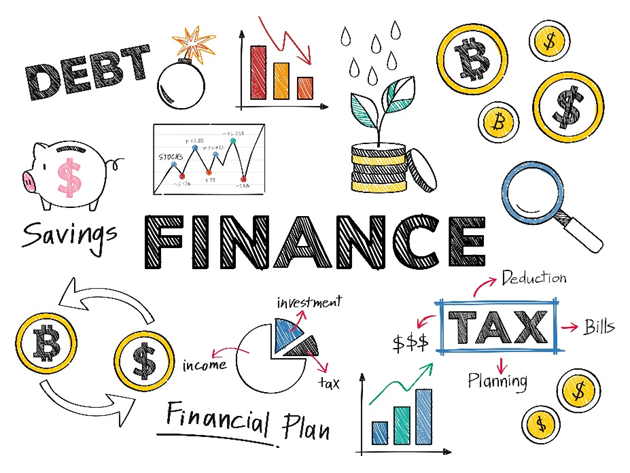
Beginner’s Guide to Budgeting: The 50/30/20 Rule Explained
Simple Budgeting Frameworks That Work for Everyone
Your Budgeting Journey Starts Here
If the word “budget” makes you think of spreadsheets, restrictions, or skipping your morning coffee — take a deep breath. Budgeting isn’t about cutting out all the fun. It’s about gaining control and clarity over your money. And one of the easiest ways to start? The 50/30/20 rule — a simple, no-fuss budgeting method that’s perfect for beginners and busy people alike.
🧠 What Is the 50/30/20 Budgeting Rule?
It’s an easy way to split your money into three key sections:
- 50% Needs
- 30% Wants
- 20% Savings & Debt Repayment
Note: No complicated math, no rigid categories. Just a balanced way to manage your money — whether you're earning $1,000 or $10,000 a month.
📊 The Breakdown (with Real-Life Examples)
Example Income: $3,000/month after taxes
✅ 1. 50% Needs — $1,500
These are your essentials — things you must pay to live and work.
- ● Rent or mortgage
- ● Utilities (electricity, water, gas)
- ● Groceries
- ● Transportation (gas, metro, car insurance)
- ● Minimum loan payments
- ● Health insurance
💡 If this bucket goes over 50%, look into downsizing or cutting other fixed costs. Even small adjustments (like switching cell plans) can free up room.
🎉 2. 30% Wants — $900
This is where lifestyle lives. It’s your “fun” money — but it still needs a cap.
- ● Dining out and takeout
- ● Streaming services
- ● Subscriptions (Spotify, gym, Netflix)
- ● Shopping and hobbies
- ● Vacations or weekend getaways
💡 Wants aren’t bad — they’re just better when they’re budgeted. Enjoy them guilt-free when they fit in this bucket.
💰 3. 20% Savings & Debt Repayment — $600
This is your future-proofing fund.
- ● Emergency fund
- ● Retirement contributions (IRA, 401(k), etc.)
- ● Extra debt payments (beyond minimums)
- ● Saving for a car, house, or education
💡 Prioritize this section as non-negotiable — it’s what builds financial freedom over time.
✋ Wait — What If My Needs Take Up More Than 50%?
Totally normal, especially in high-cost cities.
- Dial back “wants” temporarily to keep the 20% savings goal untouched.
- Cut or renegotiate bills (insurance, subscriptions, rent).
- Consider boosting income with side gigs or freelance work.
Note: It’s about balance, not perfection. Even a 55/25/20 split can work if you’re saving steadily.
💡 Why the 50/30/20 Rule Works (Especially for Beginners)
- Simple to follow — no need to categorize every latte.
- Flexible — works with any income level.
- Promotes balance — you get to spend, save, and still enjoy life.
- Easy to adjust — you can tweak the ratios as your goals evolve.
🔄 Quick Budgeting Example (Side-by-Side)
| Category | Monthly Amount | Real-World Breakdown |
|---|---|---|
| Needs (50%) | $1,500 | Rent: $900, Groceries: $300, Utilities: $150, Transit: $150 |
| Wants (30%) | $900 | Eating out: $200, Subscriptions: $100, Shopping: $250, Fun: $350 |
| Savings (20%) | $600 | Emergency Fund: $200, Credit Card: $150, Roth IRA: $250 |
🧠 Budgeting Tips to Make It Stick
- Use a budgeting app like YNAB, Mint, or EveryDollar to track progress.
- Automate savings — have 20% go straight to a separate account.
- Do a “Sunday money check-in” — 10 minutes a week to review and adjust.
- Adjust seasonally — your spending changes in summer vs. December.
❌ Budgeting Myths That Need to Die
Myth: Budgets are for people who are bad with money
Truth: Budgets are actually for people who want to be great with money.
Myth: I can’t enjoy life if I’m on a budget
Truth: Budgets don’t kill fun — they fund it, intentionally.
Myth: I don’t make enough to budget
Truth: Budgeting has less to do with your paycheck and more to do with your plan.
💬 Real-Life Budget Wins
“I used the 50/30/20 rule to get out of $12,000 in credit card debt in under a year. It made saving feel less overwhelming.”
“As a freelancer, the 50/30/20 split helped me stay steady even during slow months. I finally built a 3-month emergency fund!”
🏁 Final Words
Key Takeaway: Budgeting doesn’t have to be complicated, boring, or restrictive. The 50/30/20 rule is proof that a simple framework can still be powerful. It keeps you grounded, gives every dollar a job, and makes room for both responsibility and joy. Whether you're saving for a rainy day or your next vacation, this rule works — because it works for you.

